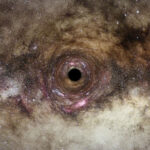Jupiter stands as the largest planet in our solar system, both in mass and volume. Named after the Roman King of Gods, it is a gas giant composed mostly of hydrogen and helium, lacking a solid surface. Despite its inhospitable nature for life, Jupiter remains a focal point of scientific interest for understanding the solar system’s formation.
Jupiter’s Position and Prominence in the Night Sky
Jupiter ranks as the fourth brightest celestial object visible from Earth, surpassed only by the Sun, Moon, and Venus. Often mistaken for a star, Jupiter’s luminosity makes it a prominent feature in the night sky.
Unveiling Jupiter’s Mass and Volume
The mass of Jupiter is colossal, being 318 times that of Earth, and its volume is so vast that it could encompass approximately 1,300 Earths. Its sheer size is about twice the combined mass of all other planets in the solar system.
Jupiter’s Rotation and Its Impact on the Planet’s Shape
Jupiter has the shortest day among all planets, completing one rotation in just about 10 hours. This rapid rotation causes a noticeable flattening at the poles and bulging at the equator.
The Great Red Spot: A Persistent Jovian Storm
First observed in the 17th century, the Great Red Spot is a massive anticyclonic storm that has persisted for over 350 years. Although it has diminished in size, it remains large enough to fit three Earths.
The Subtle Ring System of Jupiter
Contrary to popular belief, Jupiter possesses a ring system. These rings are faint, primarily composed of dust particles, and consist of three main segments: the halo, the main ring, and the gossamer ring.
Ganymede: The Largest Moon in the Solar System
Jupiter’s moon Ganymede, discovered by Galileo Galilei in 1610, is the largest in the solar system, even surpassing the planet Mercury in size. Jupiter boasts a total of 79 moons, second only to Saturn in the number of natural satellites.
Spacecraft Exploration of Jupiter
Jupiter has been visited by nine spacecraft, including Pioneer 10 and 11, Voyager 1 and 2, Galileo, Cassini, Ulysses, New Horizons, and most recently, Juno. Juno is the only mission to orbit Jupiter for in-depth exploration.
Jupiter’s Cloud Belts and Atmospheric Composition
The planet’s upper atmosphere consists of cloud belts and zones predominantly made of ammonia crystals, sulfur, and compound mixtures. These clouds would emit a pungent odor if smelled.
Jupiter’s Role in Earth’s Formation and Solar System Dynamics
Recent research suggests Jupiter may have played a crucial role in Earth’s formation and the unique arrangement of planets in our solar system. Jupiter’s distant orbit contrasts with other solar systems, where massive planets orbit closer to their stars.
Comparative Analysis: Jupiter’s Key Characteristics
| Aspect of Jupiter | Description |
|---|---|
| Size (Diameter) | Approximately 139,820 km, making it the largest planet in our solar system. |
| Rotation Period | About 10 hours, resulting in a flattened shape at the poles and bulging at the equator. |
| The Great Red Spot | A giant storm observed for over 350 years, large enough to fit three Earths inside. |
| Ring System | Consists of faint rings primarily made of dust particles, with three main segments: the halo, the main ring, and the gossamer ring. |
| Largest Moon (Ganymede) | The largest moon in the solar system, even bigger than the planet Mercury. |
| Spacecraft Visits | Nine spacecraft have visited Jupiter, including Pioneer 10 and 11, Voyager 1 and 2, Galileo, Cassini, Ulysses, New Horizons, and Juno. |
| Atmospheric Composition | Primarily composed of ammonia crystals, sulfur, and mixtures of these two compounds. |
Video Guide
To answer all your questions, we have prepared a video for you. Enjoy watching it!
Conclusion
Jupiter, with its immense size, dynamic atmosphere, and significant role in the solar system, continues to captivate and intrigue. Its study offers vital insights into planetary science and the workings of our cosmic neighborhood.





